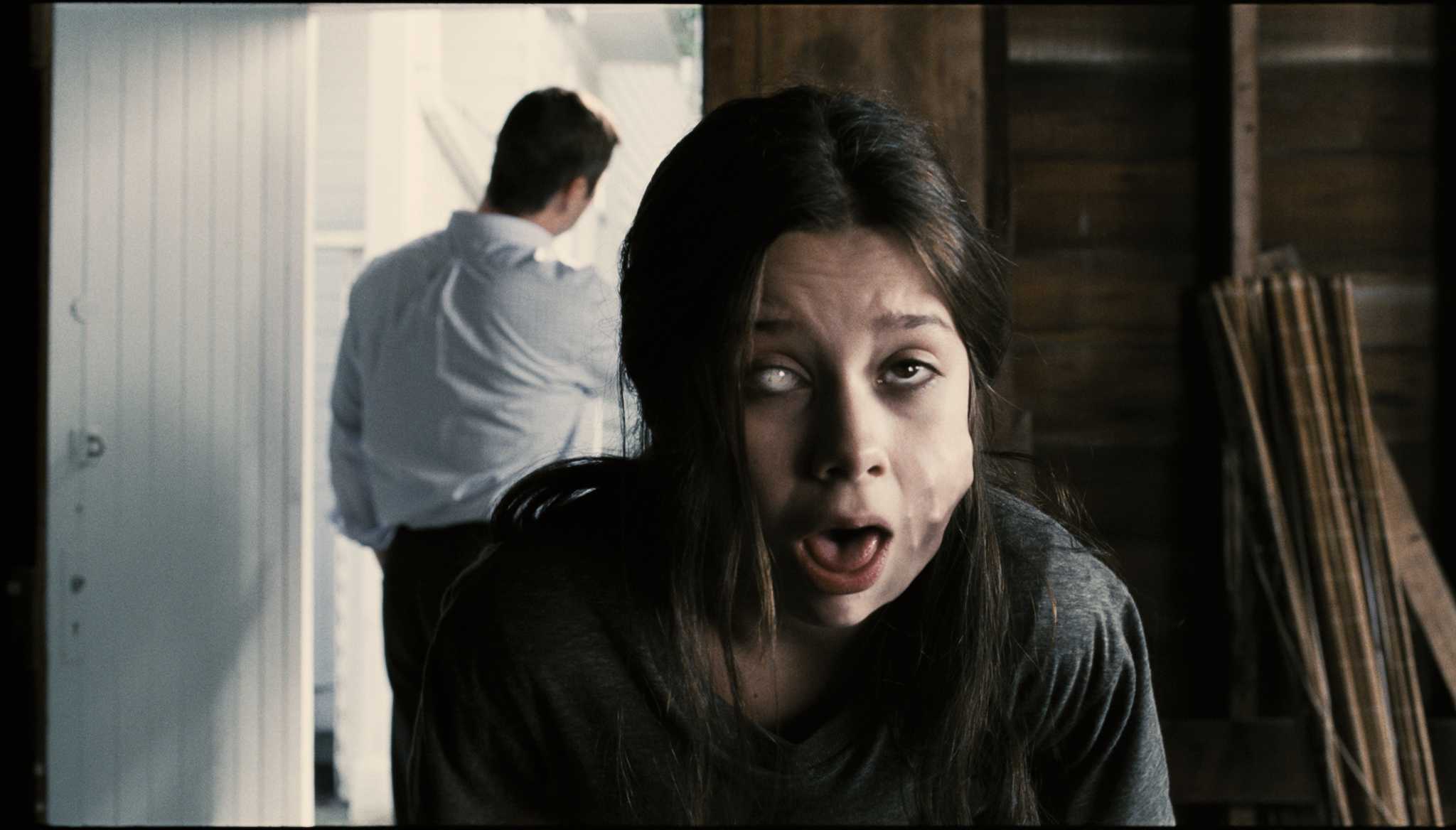Let’s be honest, there are some moments in films that make even the most hardened of cinema-goers cringe in their seats. Maybe it’s the grisly sound of bone crunching through flesh. Maybe it’s just the briefest hint of a bloody gash. Regardless, some moments seem to have been thought up specifically to make us feel uncomfortable. Yet, there’s something morbidly fascinating about them. Even after cowering from these moments in our sticky cinema seats, we replay them in our heads, repeating the wet “squishiness” of an open wound, feeling the pit of a burst gash against our skin. Yes!, we cry to the film gods, make it rain blood and please make it as disgusting as possible.
Jonathan Glazer’s Under the Skin released earlier this year to wide critical acclaim reformulated the bloody, spewing scenes we are normally used to seeing in an alien movie. Boxing off human mutilation within a black room, Glazer made the killing process clinical, methodical, even artistic. There was something about the sight of thick, tar-like liquid coating the bodies of unknown men that made even this film goer forget that what was being shown to us was incredibly grotesque. And that’s what the best visual effects do; make you forget the visceral pain attached to what you are being shown and draw you into the beauty of the cinematic process.
If Under the Skin is 2014’s adaptation of everything gruesome, then The Exorcist (William Friedkin, 1973) is surely its counterpart. Splashing queasy green vomit and sweaty grey skin all over the screen, Friedkin’s iconic film was hardly subtle. Still, there remains something utterly arresting about the images on-screen; sure, they’ll put you off your dinner and you won’t eat anything jellied for some time to come, yet the whole ‘gross-out’ factor of it is so intense that it ends up going somewhere completely different. The Exorcist and even Alien (Ridley Scott, 1979) are so watchable because they push the human body to places unknown, they suggest that because the characters in the film harbor all of these bubbling, sticky fluid messes, then so do we. Trapped inside of our bodies is a whole world of horror that we have no hope of ever escaping. And that is truly fascinating.
That is, until we are confronted with it. Whilst Friedkin’s and Scott’s characters are essentially unaware of the bodily changes happening to them (one is possessed, the other quickly dies), there is one character who is not only fully aware of her bodily change but also seems to embrace and encourage it. Andrzej Zulawski’s Possession (1981) is a cult horror nasty which stars Isabelle Adjani as the harborer of something really disgusting. Throughout the film, we watch as Adjani’s character becomes increasingly disinterested in both the world around her and her worried husband. I won’t give away the reveal but let’s just say it involves some pretty inappropriate monster activity.
The infamous metro scene flings Possession from the strange, far into the stratosphere of weird. Armed with just a bag of milk and eggs, Adjani somehow creates the most normal of activities into the most gruesome act I have ever beheld on the silver screen. Whilst she is in no way her ‘real’ self in this scene, she is still a self of some sort and, therefore, still aware and encouraging of the horror around her. The difference between Adjani’s character and the characters of other films mentioned is that whilst the others have the acts happen to them, Adjani seems to revel in her bodily changes, happily slipping from one state to the next. And that changes everything. The horror is no longer fascinating for its visual appeal. The horror is fascinating in the way that it marks the line between human and non-human.
This brings us all the way back to Under the Skin. Like Zulawski, Glazer makes a marked distinction between the human and the non-human. Whilst Zulawski uses Adjani’s very body as the bearer of the non-human, Glazer uses a more clinical touch. Rather than multiplying new things from the flesh and matter of the human body, he breaks them down, reducing them to their individual parts. Zuwaski shows how horror can be born from the human body, Glazer shows how it can be torn from it. Like an equation, the alien’s victims are reduced to the parts of their whole. With the social pulse on technology more than ever, perhaps this is the way that we have come to view each other; functioning parts of machines, void of the blood and guts we love to see on-screen. Or perhaps, it’s just another twist in the tale of cinematic horror and next month we will be shielding ourselves from a shower of blood. All that we can say is that, right now, horror has become like technology and when that starts to happen, there is no corner in which we can hide.

